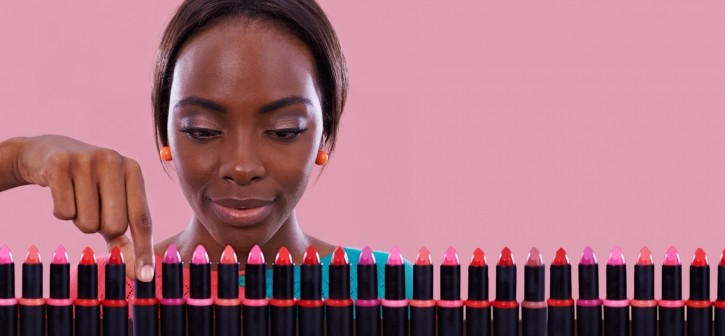Image: Getty New data from NIQ shows that brands that put a focus on innovation were twice as likely to grow their sales as those who didn’t. But where do you start?
It’s clear that innovative, outside-of-the-box products and concepts are key to standing out in a sea of beauty and personal care products in 2024 and beyond.
New data from Nielsen’s 360° consumer intelligence arm, NIQ, has demonstrated this, and we have recently heard a similar story based on data from UK-based FMCG consumer insights company MMR.
One of the key takeaways from the CEO of L’Oréal in its Q3 2024 sales results call was that beauty companies needed to put a focus on creating new things to keep beauty consumers excited.
It appears that in beauty, innovation is currently a priority.
Innovation can involve inventing a new product or developing and introducing new products, ideas or processes. It basically means thinking outside of the current status quo.
“In the beauty industry, implementing innovations to existing products can attract new buyers, create new usage occasions, justify a price premium, keep your brand top of mind and even give sales figures a glow-up,” said Global VP for Beauty at NIQ, Claire Marty.
However, Marty also acknowledged that knowing when and what to innovate is not always simple.
“It’s a difficult needle to thread to execute a strategy that balances the need to innovate, whilst taking into account market-specific trends in the beauty sector,” she said.
How can beauty brands get the innovation balance right?
According to Marty, the key to a successful innovation is threefold: idea, product and execution.
“It starts with an idea that addresses a broad need or solves a customer pain point, grounded in a strong business case,” she stated.
She said that the idea should resonate with the market and offer a solution that feels indispensable, but then the product must also deliver on its promise.
“A brand is a guarantee of quality, and the next iteration of the product should ensure experience meets expectations,” she said. “The product decisions made before the first batch rolls off the conveyor belts need to be well thought-through.”
The overarching goal is to create something that not only satisfies current needs, but also sets a higher standard that attracts new customers and retains existing ones.
Finally, Marty said that the execution is where innovation truly comes to life and that a well-executed launch can make all the difference between a product that merely exists and one that thrives.
“Tailored marketing activations are essential, especially for global markets where localised campaigns that reflect cultural nuances are crucial for success,” she shared.
“By amplifying the campaign across multiple touchpoints, brands can drive awareness and engagement, ensuring the innovation reaches the right audience in the most effective way.”
Beauty has “entered a new era”
According to NIQ’s insights, the beauty sector is entering a new era, driven by key trends such as Clean & Sustainable, Ingredient Focus, Trusted Advisors, and Personalisation & Inclusivity.
Sustainability is a major influence and clean and eco-friendly products are offered across the board, by both niche and mainstream brands.
In fact, NIQ’s research showed that three-quarters of UK consumers said they recycled or composted household waste, reflecting how seriously they take sustainability.
“Brands that prioritise eco-friendly practices not only connect with these shoppers but also strengthen their market presence,” shared Marty.
Consumers are also paying close attention to product ingredients, with a growing ‘ingredients-first’ approach.
“Shoppers want to know what’s included and excluded in their beauty products, driving innovation in formulations that feature the latest must-have ingredients,” she said.
A TikTok-fuelled world
It’s also clear that in today’s social-media-driven world, trusted voices such as celebrities, influencers, and dermatologists all play a pivotal role in shaping consumer decisions.
The rise of platforms like TikTok Shop have blurred the lines between influencers and traditional celebrities.
“Kylie Jenner and Rihanna have leveraged their brands, to captivate Gen Z, while influencers can ignite overnight interest with a single product endorsement,” said Marty.
“As consumers increasingly seek expert advice, brands that integrate professional opinions into their marketing strategies will likely see such benefits.”
She also highlighted that personalisation and inclusivity have become crucial in today’s beauty landscape.
“Shoppers are looking for products that cater to their individual needs, sparking the rise of tailored experiences such as hair and skin quizzes,” she said.
This shift also includes greater focus on once-niche areas of focus like menopause, ageing, acne acceptance, and sexual health, which Marty said is “further driving the evolution of beauty.”

